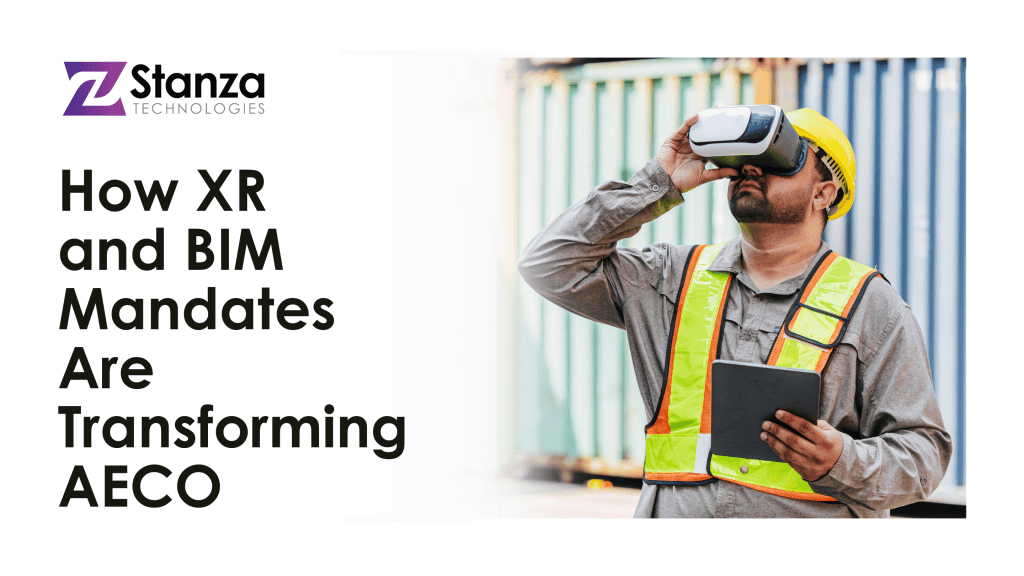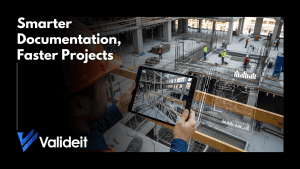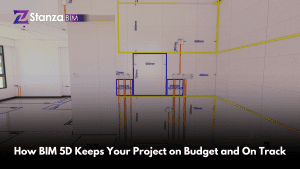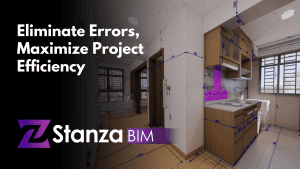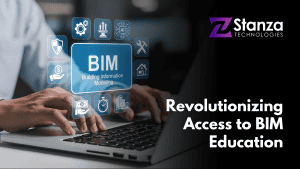In recent years, the collaboration between Extended Reality (XR), Virtual Reality (VR), and Augmented Reality (AR) to partner with Building Information Modeling (BIM) has significantly impacted the industry of architecture, engineering, construction, and operation (AECO). With its immersive visualization capabilities, XR has enabled efficient project planning, enhanced stakeholder communication, and improved design accuracy.
One of the most profound impacts of XR in BIM is its ability to provide immersive 3D experiences. Traditionally, 2D plans and even some 3D models can fail to convert the full spatial context of a design when viewed on screen. With VR, project teams and clients can virtually “walk through” a building long before it is constructed. This immersive experience helps stakeholders understand complex designs more intuitively, reducing the risk of misinterpretation. AR, on the other hand, overlays digital models onto the physical world using devices like smartphones, tablets, or AR glasses. This capability allows architects and engineers to visualize how proposed changes will integrate with existing structures, facilitating better decision-making during renovations and retrofitting projects.
The effectiveness of collaboration among diverse and complex project stakeholders is crucial for successful project delivery. XR-powered BIM makes seamless communication by providing a shared visual platform. One example is during design reviews, team members from different disciplines can gather in a virtual environment to inspect models, identify potential issues, and propose solutions in real time. This approach minimizes misunderstandings and accelerates decision-making.
XR’s benefits extend beyond the design phase. In construction, its immersive experience helps stakeholders understand complex designs more intuitively, reducing the risk of misinterpretation. AR, on the other hand, overlays digital models onto the physical world using devices like smartphones, tablets, or AR glasses. This capability allows architects and engineers to visualize how proposed changes integrate with existing structures, facilitating better decision-making during renovations and retrofitting projects. Moreover, XR can be integrated with 4D BIM (time-based Modeling) to simulate construction sequences. By visualizing how a project will evolve over time, teams can identify potential scheduling conflicts and optimize workflows before construction begins.

As XR technologies continue to advance, their integration with BIM will only deepen. Emerging innovations such as haptic feedback, AI-powered XR applications, and the development of lightweight, affordable AR devices promise to make these tools even more accessible and impactful. Furthermore, the growing adoption of cloud-based platforms ensures that XR experiences can be seamlessly shared across geographically dispersed teams.
The fusion of XR and BIM is not merely a technological trend but a fundamental shift in how the AEC industry approaches design, construction, and collaboration. By harnessing the immersive power of XR, professionals can unlock new levels of accuracy, efficiency, and creativity, ultimately delivering better outcomes for clients and communities alike.
The growing mandate of governments worldwide to adopt Building Information Modeling (BIM) in architecture, engineering, construction, and operation (AECO) has significantly impacted the industry. By establishing clear requirements for using BIM in public projects, governments have paved the way for widespread industry transformation, setting new standards for efficiency, transparency, and collaboration.)
Government mandates requiring BIM adoption are primarily aimed at improving project delivery while addressing issues of cost overruns and inefficiencies that have long plagued public infrastructure projects. By imposing standardized processes and technologies, these policies ensure that all stakeholders involved in a single project operate within a unified framework.
BIM Level 2 is a collaborative process for managing and sharing digital project information in the construction industry. It ensures all stakeholders work from coordinated 3D models with standardized data formats, fostering better communication, reduced errors, and improved efficiency. One of the most significant impacts of government BIM mandates is the increased focus on data-driven decision-making. By utilizing BIM Level 2 compliance, governments ensure that project data is meticulously documented, stored, and shared among all relevant parties. This approach fosters greater accountability and enables more informed decision-making throughout the project lifecycle. Moreover, using open data formats ensures interoperability between different software platforms, critical for seamless collaboration across multidisciplinary teams.)
The United Kingdom’s BIM mandate serves as a prime example of how such policies can drive industry-wide change. Introduced in 2016, the UK government’s requirement for BIM Level 2 compliance on all public sector projects has not only elevated the quality of infrastructure development but also inspired other nations to follow suit. The UK’s approach emphasizes the importance of collaborative working, digital design, and the integration of cost and schedule data within BIM models, resulting in significant cost savings and improved project delivery timelines.
Government mandates have also catalyzed innovation within the AEC industry by setting high digital design and construction standards. These kinds of policies have encouraged many companies to invest in advanced technologies, such as 4D and 5D BIM, artificial intelligence, and cloud-based platforms. This technological advance has enabled firms to stay competitive in an increasingly digital landscape while delivering higher-quality projects.
Government mandates are expected to play an even more significant role in shaping the future of the AEC industry. As global priorities shift toward sustainability and climate resilience, BIM mandates will likely incorporate requirements for energy performance analysis, lifecycle assessments, and green building certifications. By aligning digital construction practices with environmental goals, governments can drive the creation of smarter, more sustainable infrastructure.
The influence of government mandates on BIM adoption underscores the transformative power of policy in driving innovation and standardization. These mandates have laid the foundation for a more efficient, transparent, and forward-thinking AEC industry by championing digital tools and collaborative processes.
